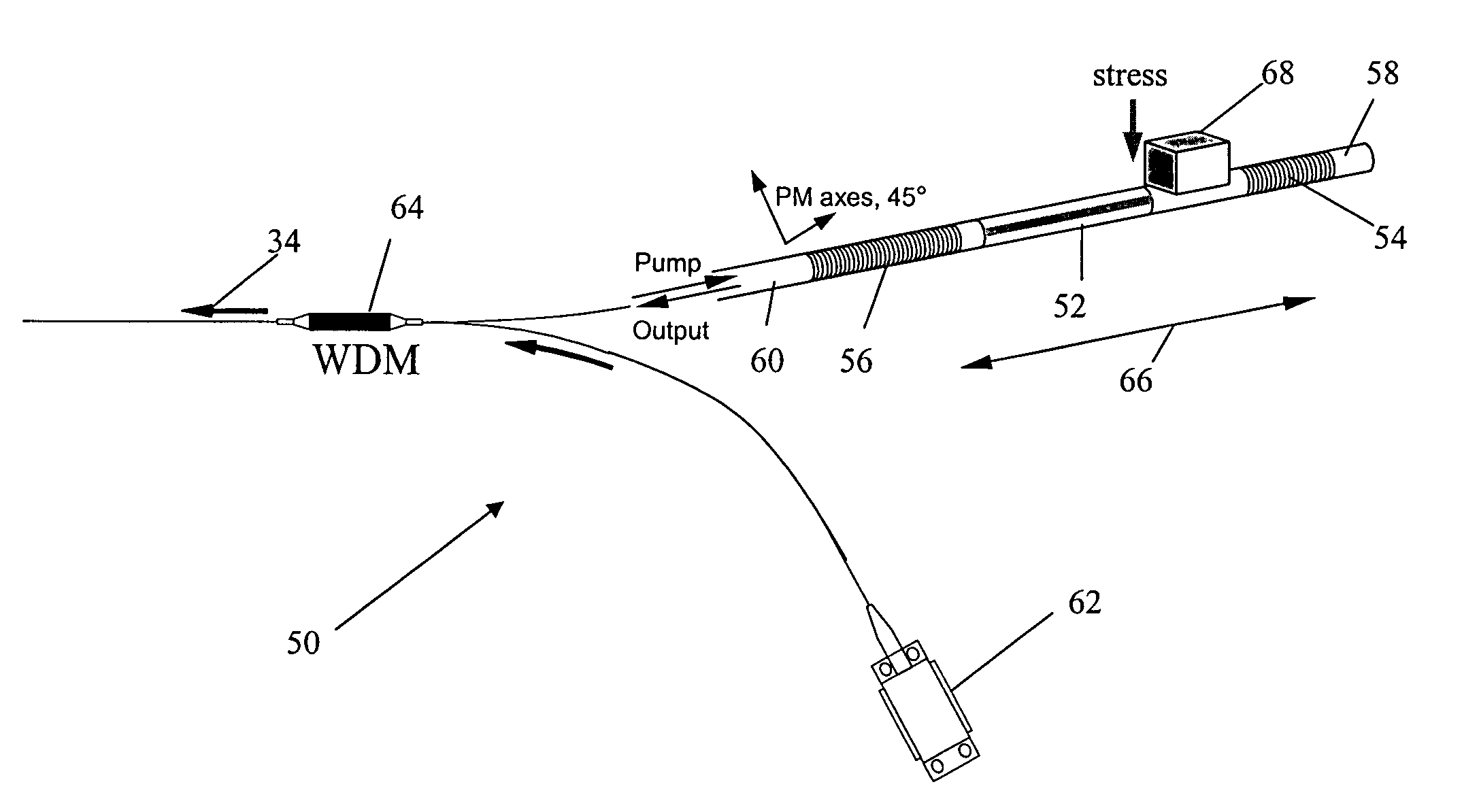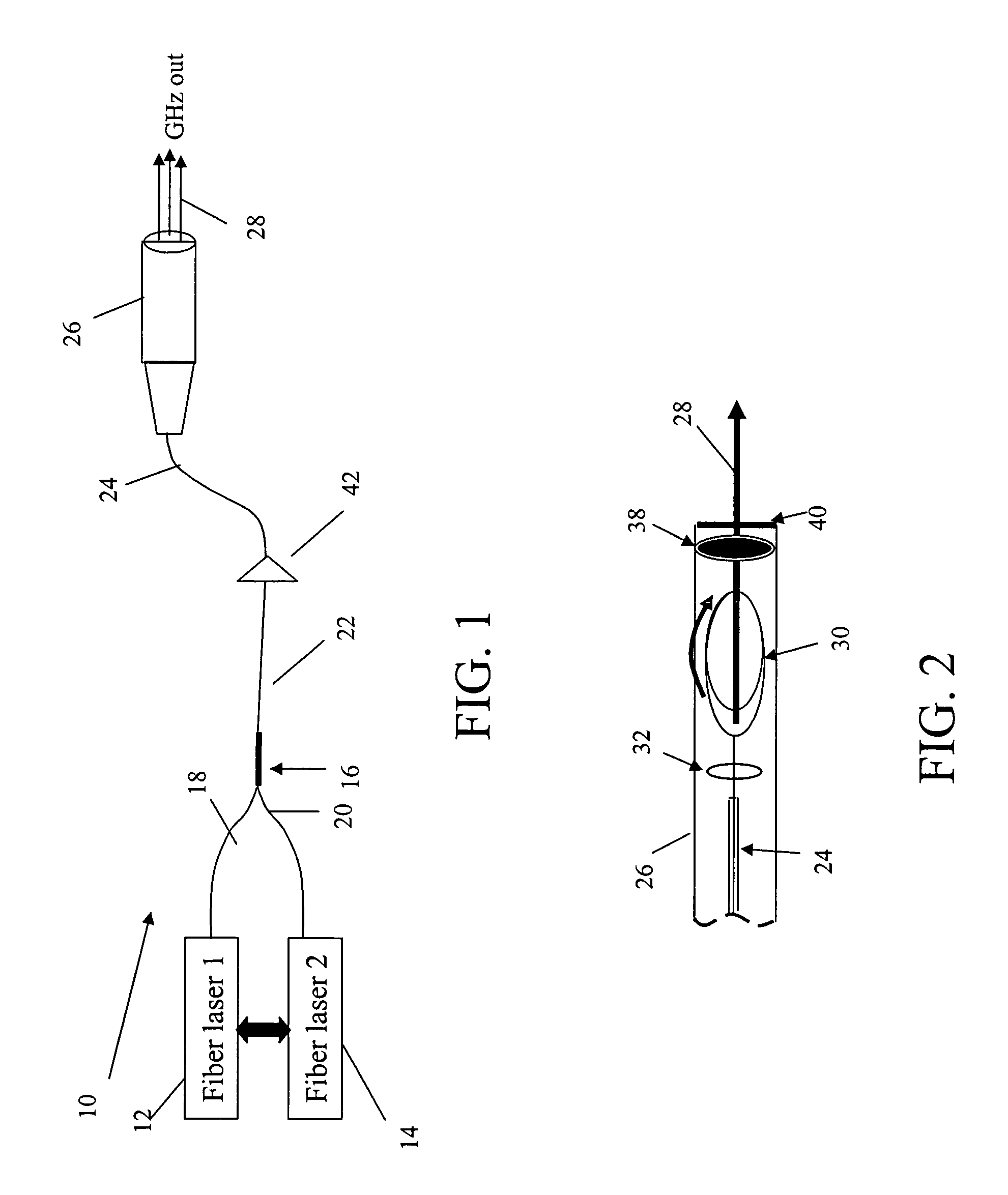Fiber-laser-based gigahertz sources through difference frequency generation (DFG) by nonlinear optical (NLO) materials
a fiber laser and difference frequency technology, applied in the field of gigahertz sources, can solve the problems of weight and integration of the reported ‘free-space’ implementation, affecting the commercial success of the project, and being bulky and not portabl
- Summary
- Abstract
- Description
- Claims
- Application Information
AI Technical Summary
Benefits of technology
Problems solved by technology
Method used
Image
Examples
Embodiment Construction
[0022]The present invention provides an integrated DFG GHz source that is capable of scaling in both output power level and number of output channels. The compact and lightweight GHz source covers a wide range from 30 to 300 GHz (1,000 to 10,000 microns), capable of generating a diffraction-limited output and does not require cryogenic cooling.
[0023]This is accomplished with a fiber-laser-based implementation of a Gigahertz source 10 through difference frequency generation (DFG) by nonlinear optical (NLO) materials, e.g. crystals such as GaAs, GaSe, ZnGeP2, GaP, LiNbO3, or polymers such as DAST and poled polymers as shown in FIG. 1. A pair of pulsed fiber lasers 12 and 14, suitably Q-switched, generate single-frequency outputs at frequencies ω1 and ω2. The fiber lasers preferably generate single-frequency (single-transverse and single-longitudinal mode) outputs to ensure wavelength stability. A fiber beam combiner 16 includes a pair of input fibers 18 and 20 that are spliced to the ...
PUM
 Login to View More
Login to View More Abstract
Description
Claims
Application Information
 Login to View More
Login to View More - R&D
- Intellectual Property
- Life Sciences
- Materials
- Tech Scout
- Unparalleled Data Quality
- Higher Quality Content
- 60% Fewer Hallucinations
Browse by: Latest US Patents, China's latest patents, Technical Efficacy Thesaurus, Application Domain, Technology Topic, Popular Technical Reports.
© 2025 PatSnap. All rights reserved.Legal|Privacy policy|Modern Slavery Act Transparency Statement|Sitemap|About US| Contact US: help@patsnap.com



